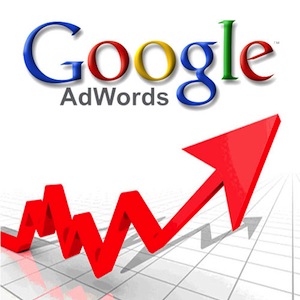While YaBlog has spent a lot of time focusing on pay-per-click (P.P.C.) for Facebook, it’s important to understand the benefits of the same advertising format in a Search Engine Marketing (S.E.M.) capacity. Though the two platforms share the base concept of performance-based billing, they’re different enough in targeting and execution that a compare-and-contrast is warranted when deciding how to best drive traffic to your website. This is mind, I’ll now outline three reasons why you may want to start a Google AdWords S.E.M. campaign today:
Keyword-Based Targeting
 Unlike with Facebook P.P.C., the clicks/interactions resulting from a Google AdWords campaign originate exclusively from keywords, the corresponding phrases of which are chosen by you, the campaign manager. This offers you the ability to cast an incredibly wide net of search terms relating to how you think your customers are looking for you, then cull the ones that turn out to be ineffective. Google’s Keyword Planner tool (a free service that’s part of the AdWords network) can even help you discover keywords pertaining to your business that you might never even have thought of otherwise.
Unlike with Facebook P.P.C., the clicks/interactions resulting from a Google AdWords campaign originate exclusively from keywords, the corresponding phrases of which are chosen by you, the campaign manager. This offers you the ability to cast an incredibly wide net of search terms relating to how you think your customers are looking for you, then cull the ones that turn out to be ineffective. Google’s Keyword Planner tool (a free service that’s part of the AdWords network) can even help you discover keywords pertaining to your business that you might never even have thought of otherwise.
You Only Pay For Results
One of the biggest selling points of P.P.C. advertising is that your credit card is only billed it people actually click on your ad. What this means is that Google affords you an essentially unlimited trial and error period to fool around with different keywords and demographic targeting options until you get it right. It’s a very compelling case on Google’s part: Despite having a more expensive average cost-per-click ratio than Facebook, the AdWords network offers exposure to a much wider range of users (ie. everyone in the world who uses Google) and allows you to direct them to specific pages within your site. The same performance-based billing applies to the Google Display Network, which is the section of AdWords that allows you to showcase full image ads on an extensive range of popular websites that your potential customers could be browsing.
Campaign Segmentation
Let’s say, for example, that you work for a creative firm which offers an array of different web design and online marketing services, and that you want to market them separately under one campaign in the AdWords network. Not only does Google allow and encourage this, they make managing multiple ads quite easy. You could create one about web design, one for social media management, one for back end development (etc.), then track their respective performances both individually and in the context of the whole campaign. You can also assign different budget for different ads within a campaign, focusing the bulk of your spend on products and services that you’re trying to push more than others.




